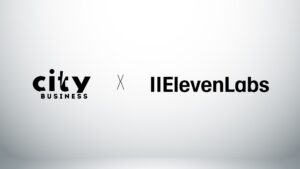Hackathon Raptors’ 72-hour challenge validates measurable approaches to reviving abandoned codebases

Hackathon Raptors, a UK Community Interest Company (CIC #15557917), concluded its Code Resurrection hackathon on September 8th, 2025, with results demonstrating practical applications of digital archaeology methodologies. The 72-hour challenge required participants to systematically evaluate abandoned GitHub repositories and implement functional resurrections using modern development practices.
The competition’s archaeological scoring matrix weighted technical implementation at 25%, archaeological excellence at 30%, innovation and vision at 20%, user experience at 15%, and documentation quality at 10%. This framework encouraged participants to balance historical understanding with measurable enhancement capabilities.
Technical Methodology Validation
Digital archaeology in software development applies established principles from Michael Feathers’ “Working Effectively with Legacy Code” to abandoned repositories. The hackathon demonstrated three primary approaches for systematic resurrection:
Seam identification enables safe modifications without direct code changes. Object seams leverage inheritance and interfaces, link seams modify linking behavior, and preprocessing seams use preprocessor directives for conditional compilation. The winning projects demonstrated effective application of these techniques.
Assessment frameworks using the SQALE Method (Software Quality Assessment based on Lifecycle Expectations) provide quantifiable technical debt measurement: Technical Debt Ratio = Technical Debt / (Cost per LOC × LOC). Industry benchmarks show $361,000 average technical debt per 100,000 lines of code, with ratings from A (0-5% debt ratio) through E (>50% debt ratio).
Modernization patterns follow established approaches including the Strangler Fig Pattern for incremental replacement and Branch by Abstraction for deeper stack modernization. These methodologies address the fundamental challenge where 85% of GitHub’s 100+ million repositories become inactive within two years.
Competition Results and Technical Analysis
First Place: Sujal Shah (Score: 4.40/5.00)
Shah’s facial recognition resurrection demonstrated systematic archaeological methodology. The original project, abandoned due to performance limitations and outdated dependencies, received comprehensive modernization. The resurrection preserved core algorithmic insights while implementing live webcam feed processing capabilities that addressed the original’s static image limitations.
Technical improvements included API architecture updates that maintained interface compatibility while enabling real-time processing. The project achieved measurable performance gains through modern machine learning frameworks unavailable during the original development period. Documentation provided detailed comparative analysis highlighting specific limitations of the original API and corresponding enhancement approaches.
The evaluation noted: “The application is able to read the face and facial features with good accuracy. Live analysis using webcam feed is useful in particular. Team has enhanced the existing api in a responsible and efficient manner.”
Second Place: Smart Builders (Score: 4.06/5.00)
The Smart Builders team resurrected Snippet Box, an abandoned code snippet management tool. Their archaeological research identified fundamental usability and scalability issues that led to the original project’s abandonment. The resurrection implemented modern full-stack architecture addressing these specific limitations.
Key technical achievements included AI-powered categorization and search capabilities, responsive design implementation, and API compatibility updates. The team demonstrated systematic modernization while preserving the intuitive workflow that made the original concept valuable.
Judges noted: “You clearly did your archaeological work, identified the issues of the original Snippet Box, and delivered a modern full-stack solution with AI features and a modern UI. Documentation and demo quality are excellent.”
Third Place: Team Honey (Score: 3.64/5.00)
Team Honey’s Chrome extension resurrection showcased clean architectural separation between UI components and processing logic. The project combined browser extension frontend with Python-based AI modules, demonstrating how legacy browser automation concepts can incorporate modern machine learning capabilities.
The implementation featured intuitive file organization with clear separation of concerns: background.js, content.js, popup components for the extension interface, and separate Python scripts for complex processing logic. This architectural approach solved performance limitations that contributed to the original project’s abandonment.
The evaluation highlighted: “The project’s file structure is simple and intuitive… Clear separation between UI (Chrome extension) and processing logic (Python) is a plus.”
Expert Evaluation Framework
The judging panel included technical experts who applied systematic evaluation criteria across multiple domains. The assessment framework emphasized understanding the archaeological process – why projects failed, what made them valuable, and how modern techniques address fundamental limitations.
Serhii Onishchenko, Senior Software Engineer with 9+ years in frontend and full-stack development, evaluated performance optimization and secure architecture implementations. His experience with accessibility-first design proved essential when assessing how resurrected projects addressed modern usability standards not prioritized during original development. His background with React, TypeScript, and modern CI/CD pipelines provided practical context for evaluating modernization feasibility.
John Wesly Sajja contributed enterprise perspective through 20+ years in SAP S/4HANA data migration and AI-powered automation. His experience transforming outdated enterprise systems offered insight into resurrection challenges at organizational scale. His expertise in cutover strategy and legacy system modernization helped evaluate whether abandoned projects contained architectural decisions viable in contemporary enterprise environments.
Vishnu Prasad Krishnakumar brought supply chain and ERP expertise with 12+ years in warehouse automation and IoT integration. His experience with ASRS integration and digital transformation provided context for evaluating integration capabilities with modern enterprise ecosystems. His work with SAP EWM and cross-functional system integration informed assessment of connectivity and interoperability requirements.
Measured Economic Impact
Research supporting the hackathon’s methodology demonstrates concrete economic benefits. Forrester studies document 228% ROI over three years for systematic application modernization, with 15-month payback periods. Organizations typically achieve 50% increased development speed and 40% reduction in infrastructure costs through systematic resurrection versus rebuild approaches.
The calculation framework uses: ROI = (Benefits – Costs) / Costs × 100, where benefits include reduced maintenance costs, improved development velocity, avoided security breach costs, and reduced downtime. With legacy systems costing $4,500 per MIPS for mainframes and developer loaded costs at $100-200/hour, resurrection economics favor systematic approaches for projects meeting viability criteria.
Verification Methods and Quality Assurance
The hackathon required participants to implement verification methodologies ensuring resurrection quality. Golden Master Testing captured baseline outputs for representative inputs, creating test harnesses comparing new outputs to established baselines. This characterization testing approach documents actual behavior rather than intended behavior.
DORA metrics provided DevOps performance benchmarks with elite performers achieving deployment frequencies of multiple times daily, lead times under one hour, and change failure rates below 15%. These metrics enabled objective resurrection success measurement compared to industry standards.
Security assessment integrated OWASP Top 10 compliance tracking and CVE scanning to ensure resurrected code met modern security standards. Legacy systems incur 18% higher breach costs averaging $4.45M due to slower detection and recovery, making security updates critical for resurrection viability.
Systematic Assessment Framework
The competition demonstrated a reproducible assessment framework progressing through defined phases:
Discovery Phase catalogs components, dependencies, and interfaces while conducting stakeholder interviews and documentation archaeology. This identifies original project goals, user feedback, and specific failure points.
Evaluation Phase performs business impact assessment, technical health analysis using established metrics, and identifies viable modernization paths. SQALE debt ratio calculation and maintainability index scoring provide objective viability assessment.
Implementation Phase applies selected strategies based on risk/reward analysis, defines incremental delivery phases, establishes measurable KPIs, and estimates resource requirements.
The decision matrix weights factors systematically: Modernization Decision = (business_criticality × 0.3) + (technical_debt_ratio × 0.25) + (security_risk_score × 0.2) + (modernization_cost × 0.15) + (organizational_readiness × 0.1).
Industry Applications and Future Development
The hackathon results validate digital archaeology as a practical methodology for addressing software development inefficiency. Rather than constantly rebuilding solutions, organizations can systematically evaluate abandoned repositories to identify resurrection candidates with measurable success criteria.
Success requires treating resurrection as organizational capability rather than one-time projects. The competition demonstrated that careful archaeological analysis can recover substantial value from abandoned codebases, particularly when combined with modern development practices and systematic evaluation frameworks.
Industry adoption depends on developing standardized assessment tools, training programs for digital archaeology techniques, and integration with existing DevOps practices. The methodology particularly benefits organizations with extensive legacy codebases seeking modernization paths that preserve institutional knowledge while achieving measurable improvements in performance, security, and maintainability.
About Hackathon Raptors
Hackathon Raptors operates as a UK Community Interest Company dedicated to organizing technology challenges that demonstrate practical applications of software engineering methodologies. Based in London and registered as CIC #15557917, the organization has successfully conducted eight hackathons in 2024 with over 1,600 participants. More information is available at raptors.dev or by contacting hello@raptors.dev.
The Code Resurrection hackathon represents one component of their broader mission to advance practical software engineering techniques through competitive implementation and expert evaluation. Their approach combines academic rigor with industry application, producing measurable outcomes that benefit the broader development community.






